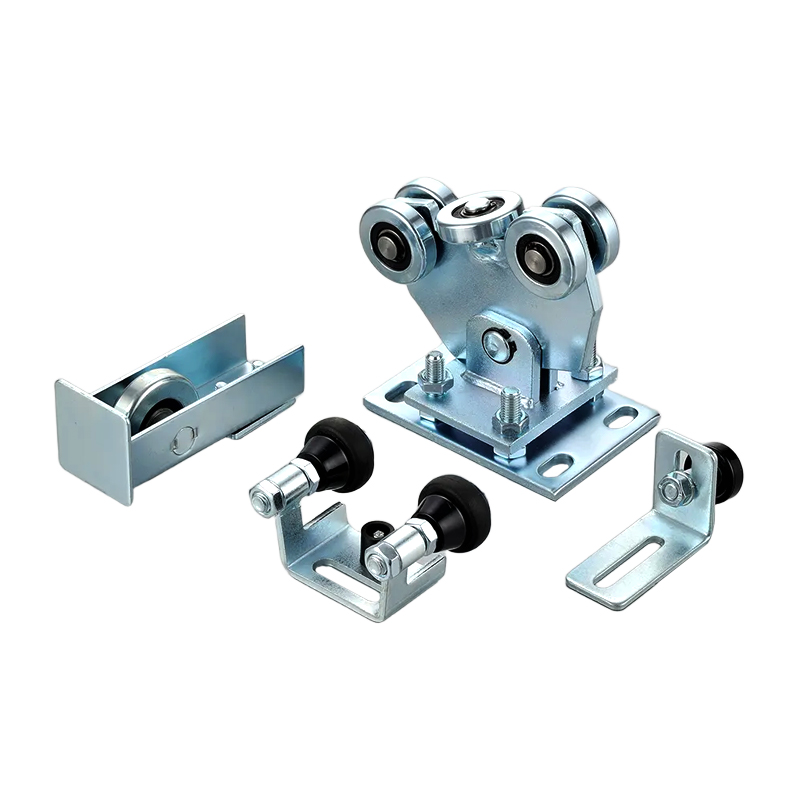No. 200 Gaoxin RD, Shanghua St, Lanxi, Zhejiang, P. R China
The Sliding Doors Steel Rack Pinion Gear is a critical component in va...
See DetailsIndustrial sliding doors are widely used in warehouses, factories, and storage facilities due to their ability to cover large openings while conserving space. At the core of their functionality are guide wheels, which help align and stabilize the door along its track, ensuring consistent and controlled movement. Over time, wear, environmental exposure, and accumulated debris can degrade performance, making timely maintenance and repairs essential.

Common Issues and Diagnosis
Some of the frequent issues with guide wheels include uneven movement, excessive noise, and track misalignment. These symptoms may indicate worn bearings, dirt buildup in the track, or deformation of the wheel itself. Periodic inspection helps in early detection of these problems.
Routine Maintenance Tasks
Cleaning: Dust, metal shavings, and debris can accumulate on tracks and wheels, impeding movement. Cleaning both components with a brush and mild solvent can restore proper function.
Lubrication: Guide wheels with bearings require periodic lubrication. Use grease or a silicone-based lubricant compatible with the environment (indoor/outdoor).
Fastener Inspection: Check that bolts, mounting plates, and brackets remain secure. Vibration and load stress may loosen them over time.
Wheel Replacement: If wheels are chipped, cracked, or have worn-down bearings, replacing them with matching specifications is often the efficient solution.
Preventive Care
Establishing a routine maintenance schedule—monthly for high-traffic doors, quarterly for less-used systems—helps minimize downtime and prevents more significant damage to tracks or door structures.
By approaching guide wheel care proactively, industrial facilities can ensure smoother door operation, better safety, and a longer service life for hardware components.
Heavy-duty gate caster wheels are integral to supporting and mobilizing large, often metal, gates in commercial, agricultural, or security applications. While they may appear to be simple mechanical parts, a closer look reveals the precision and thoughtful design that goes into their manufacturing. These components must balance strength, flexibility, durability, and ease of movement under substantial loads.
Material Selection and Construction
Caster wheels for heavy-duty gates are typically constructed from solid steel, cast iron, or polyurethane-coated metals. Steel and cast iron provide the structural strength needed to bear hundreds or even thousands of kilograms, while polyurethane offers shock absorption and quiet operation. The wheel hub, axle, and bearings are engineered to withstand both vertical loads and lateral forces caused by turning or gate misalignment.
Bearing Integration
The use of high-capacity ball bearings or tapered roller bearings inside the caster ensures smooth rotation and reduced friction. This design reduces the manual force required to open or close the gate, even over uneven surfaces. For long-term reliability, many caster wheels feature sealed bearing systems to resist dust, water, and contaminants.
Swivel and Spring Features
Some heavy-duty gate caster wheels come with swivel bases, allowing for more flexible movement, especially on curved or angled tracks. Others include spring-loaded mechanisms that compensate for slight surface variations, maintaining constant ground contact and preventing excessive stress on the gate structure.
Surface Treatment and Finish
To protect against corrosion, particularly in outdoor or high-humidity environments, caster wheels often receive surface treatments such as galvanization, powder coating, or black oxide finishes. These not only improve durability but also enhance the appearance of the wheel when visible on decorative gates.